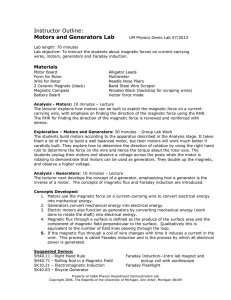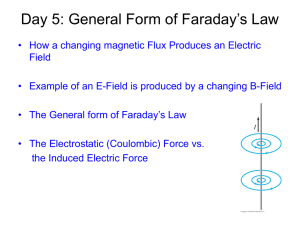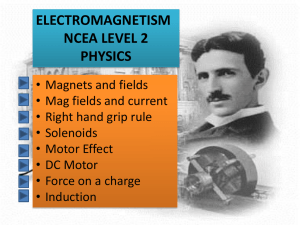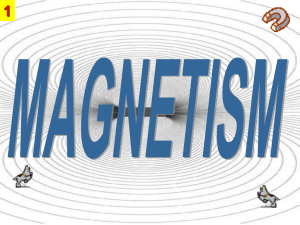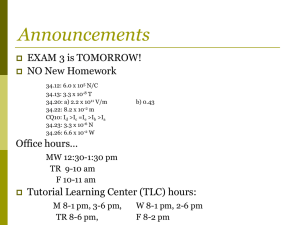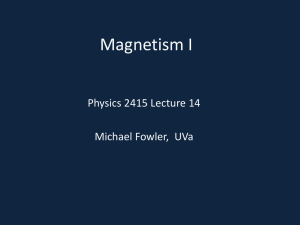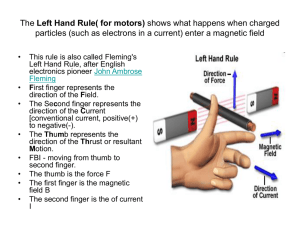DC Motors
advertisement
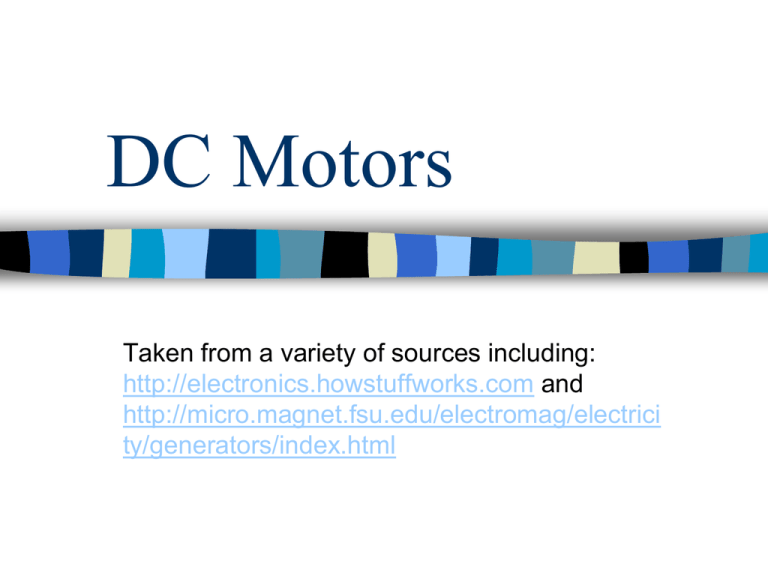
DC Motors Taken from a variety of sources including: http://electronics.howstuffworks.com and http://micro.magnet.fsu.edu/electromag/electrici ty/generators/index.html Motors Electromagnetic direct current (DC) motors – Usually runs high speed and low torque (Gear down) Electromagnetic alternating current (AC) motors – Seldom used in Robots because power supply is battery DC Motors The most common actuator in mobile robotics simple, cheap, and easy to use. come in a great variety of sizes, to accommodate different robots and tasks. Principles of Operation Motors convert electrical into mechanical energy. They consist of permanent magnets and electromagnets. When current is applied to an electromagnet, a magnetic field is generated which reacts with the static magnet . The interaction of the magnetic fields produces the movement of the shaft/armature. Thus, electromagnetic energy becomes motion. The Basic Idea A motor uses magnets to create motion. The fundamental law of all magnets: Opposites attract and likes repel. Inside an electric motor, these attracting and repelling forces create rotational motion. How do magnets arise? There are two main sources of magnetic fields: – magnetic fields due to electric currents in conducting materials. – fields arising from magnetic materials. In these, electron motion (orbital or spin) can lead to a net ‘magnetic moment’ and a resulting magnetization. Electromagnets When a current flows through a conductor, a magnetic field surrounds the conductor. As current flow increases, so does the number of lines of force in the magnetic field You can see that the field is perpendicular to the wire and that the field's direction depends on which direction the current is flowing in the wire. Andre Ampere (1775-1836) formulated the right hand rule in the early 1820s. Ampere’s essential contribution was to show that electricity and magnetism were part of the same phenomenon. Coil the Wire Because the magnetic field around a wire is circular and perpendicular to the wire, an easy way to amplify the wire's magnetic field is to coil the wire. If you wrap wire around a nail 10 times, connect the wire to a battery, the nail behaves just like a bar magnet. Check out this animation Back to The Motor A simple motor has 6 parts: • Armature or rotor • Commutator • Brushes • Axle • Field magnet • DC power supply Armature, Commutator and Brushes The armature takes the place of the nail in an electric motor. The armature is an electromagnet made by coiling thin wire around two or more poles of a metal core. The "flipping the electric field" part of an electric motor is accomplished by two parts: the commutator and the brushes. Electric and magnetic fields: Lorentz force A current-carrying wire in a magnetic field experiences a force. The magnitude and direction of this force depend on four variables: the magnitude and direction of the current (I), the length of the wire (L), the strength and direction of the magnetic field (B), and the angle between the field and the wire (Θ). F=ILXB Or in scalar terms: F = I L B SinΘ When current is in amperes, length in meters, and magnetic field in teslas, the force is in newtons. The direction of the force is perpendicular to both the current and the magnetic field, and is predicted by the right-hand cross-product rule. Applet Demo A Real DC Motor A video Better pictures
